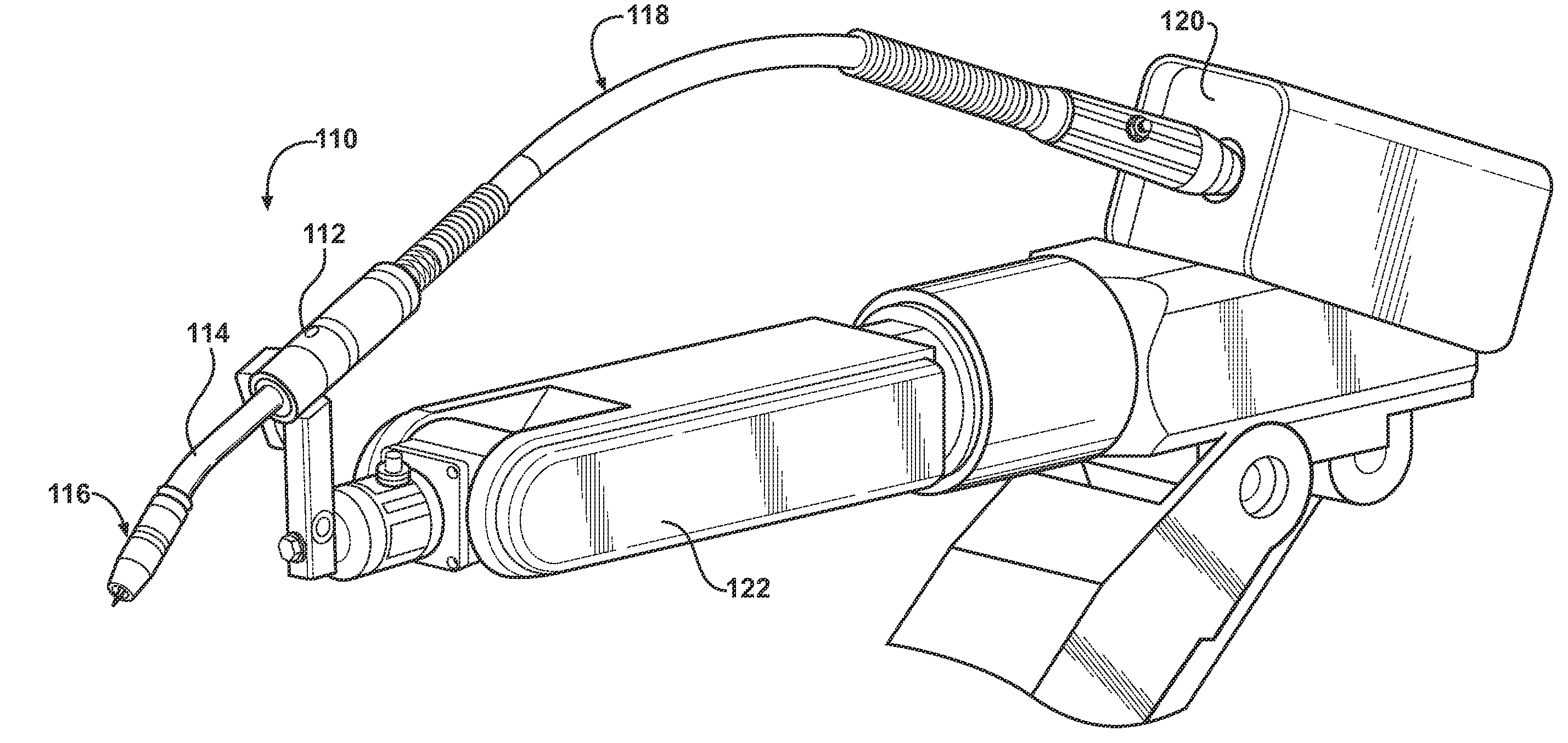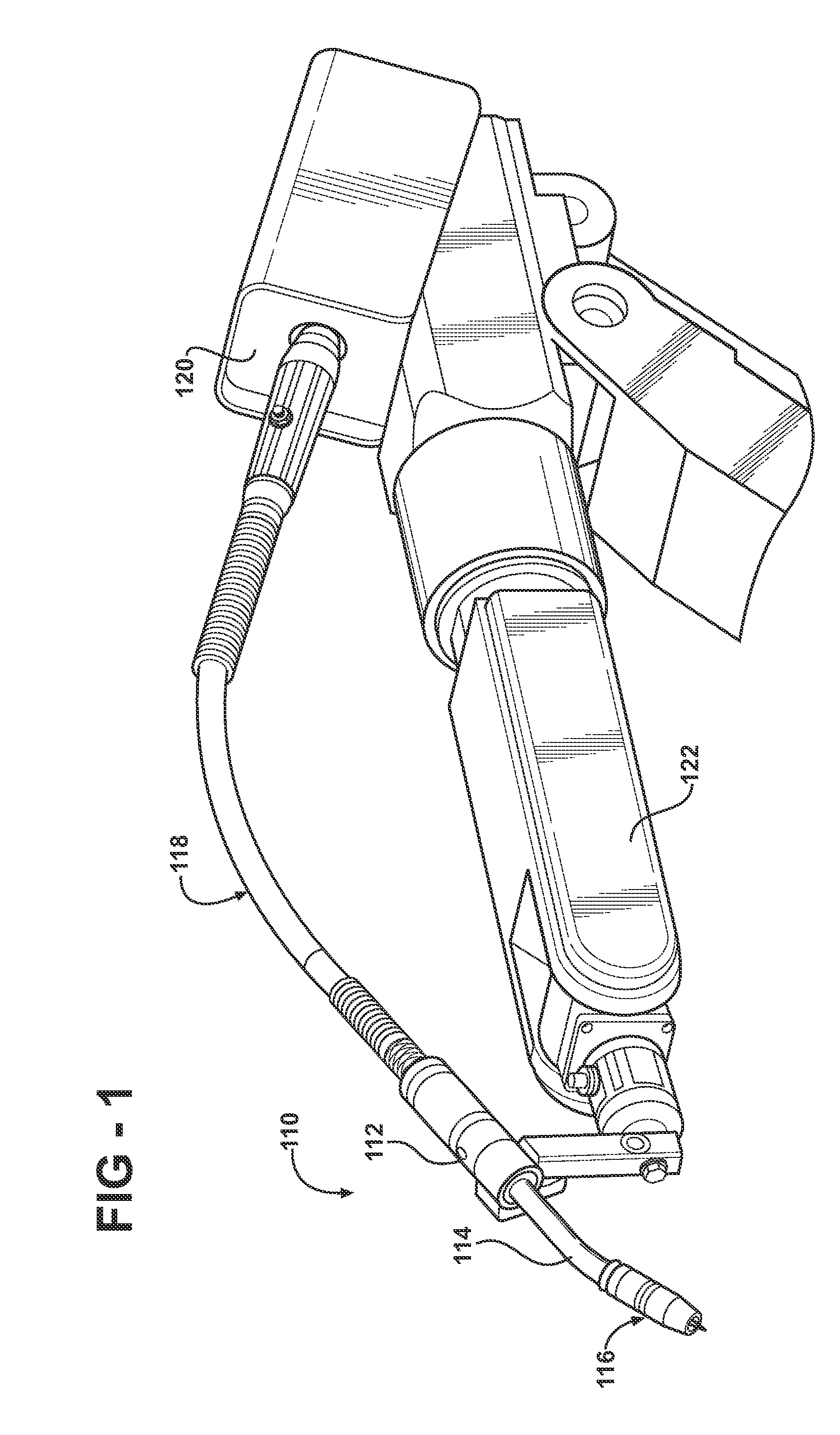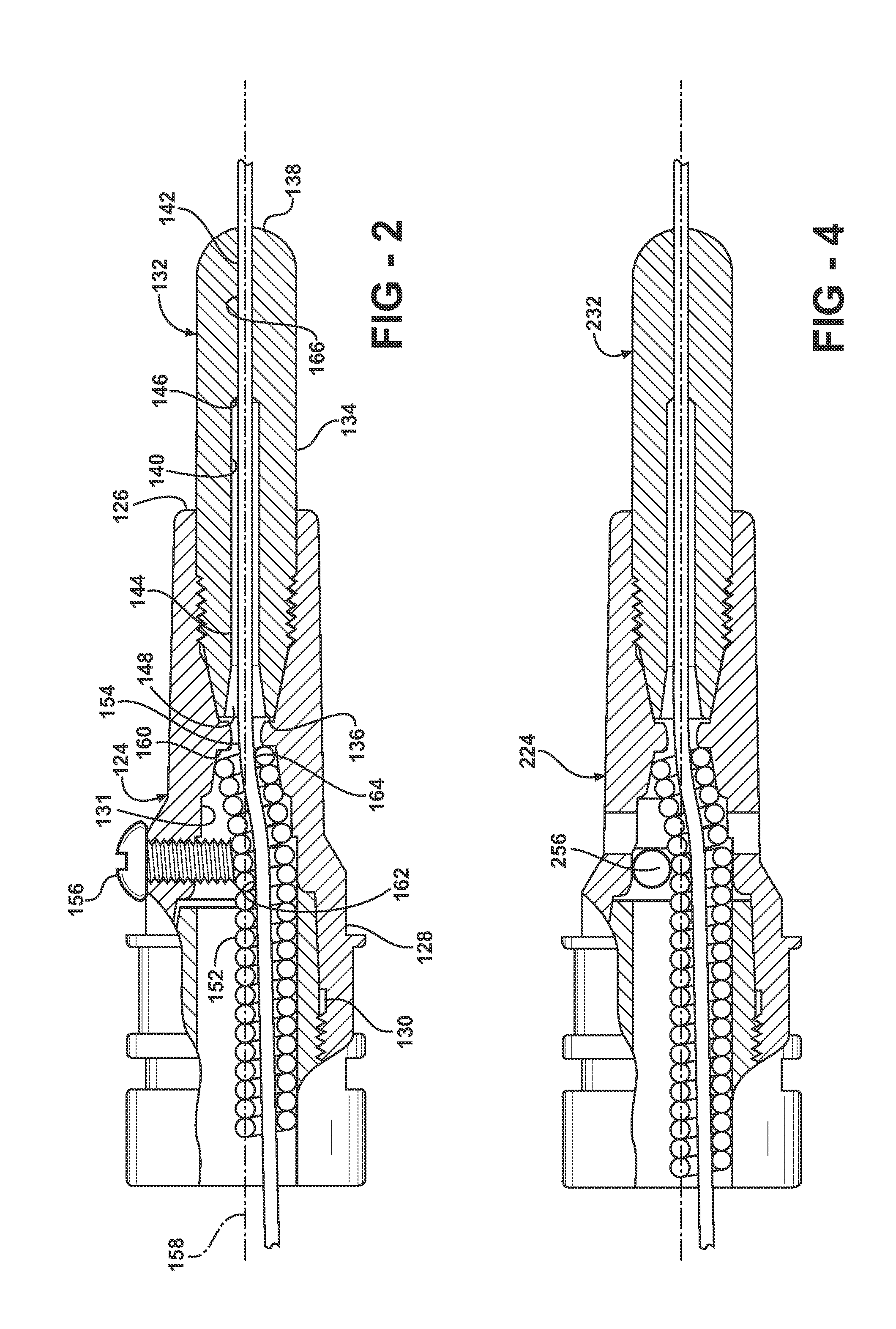Retaining head and contact tip for controlling wire contour and contacting point for gmaw torches
a technology of retaining head and contact tip, which is applied in the direction of welding apparatus, electrode supporting devices, manufacturing tools, etc., can solve the problems of discontinuous beads, cold welding, and arc-low energy consumption, and achieves stable contact force, minimizes the effect of welding wire cast, and straight welding wire contour
- Summary
- Abstract
- Description
- Claims
- Application Information
AI Technical Summary
Benefits of technology
Problems solved by technology
Method used
Image
Examples
first embodiment
[0030]Turning to FIGS. 1 and 2, in the invention, the front end 116 of the welding torch more specifically includes a retaining head 124 having a front, contact tip mounting end 126 and an opposite, retaining head mounting end 128 at its rear. The contact tip mounting end 126 is adapted to receive and mount a contact tip 132. A throughbore 130 extends axially from the contact tip mounting end 126 to the retaining head mounting end 128. The throughbore 130 includes a stepped or tapered reduced diameter portion 131 in which the diameter of the throughbore gradually decreases in a direction from the retaining head mounting end 128 to the contact tip mounting end 126. The diameter of the throughbore 130 in the reduced diameter portion 131 is smaller than the diameter of the throughbore 130 at the retaining head mounting end 128.
[0031]The contact tip 132 includes a body 134 having a mounting end 136 and an opposite tip end 138. A stepped throughbore 140 extends axially through the body 1...
fourth embodiment
[0042]In a fourth embodiment shown in FIG. 6, the deflector 456 is disposed in the gooseneck 414 rather than the retaining head 424.
fifth embodiment
[0043]In a fifth embodiment shown in FIG. 7, the deflector includes a rear pin 572 and a front pin 574 disposed in the retaining head 524, and correspondingly the liner 552 is recessed behind the rear pin 572. Alternatively, the pins 572, 574 may be rollers. The pins 572, 574 are generally parallel to each other and perpendicular to the centerline 558 of the throughbore 530. The rear and front pins 572, 574 guide the contour of the welding wire 554 by directly contacting the welding wire. The distance between the pins 572, 574 may be approximately 0.5 to 0.8 inches, and the welding wire may be bent at an angle of approximately 4.5 to 6 degrees between the pins, thereby forming an obtuse angle. Optionally, a cylindrical tube 576 may be coaxially inserted into the throughbore 530 of the retaining head 524 and between the rear and front pins 572, 574. The tube 576 prevents welding spatter that comes through gas holes 578 from passing into the inlet 548 of the contact tip 532.
PUM
| Property | Measurement | Unit |
|---|---|---|
| Length | aaaaa | aaaaa |
| Angle | aaaaa | aaaaa |
| Diameter | aaaaa | aaaaa |
Abstract
Description
Claims
Application Information
 Login to View More
Login to View More - R&D
- Intellectual Property
- Life Sciences
- Materials
- Tech Scout
- Unparalleled Data Quality
- Higher Quality Content
- 60% Fewer Hallucinations
Browse by: Latest US Patents, China's latest patents, Technical Efficacy Thesaurus, Application Domain, Technology Topic, Popular Technical Reports.
© 2025 PatSnap. All rights reserved.Legal|Privacy policy|Modern Slavery Act Transparency Statement|Sitemap|About US| Contact US: help@patsnap.com



